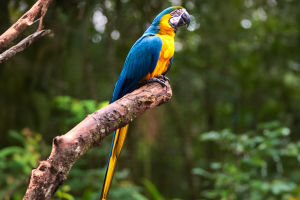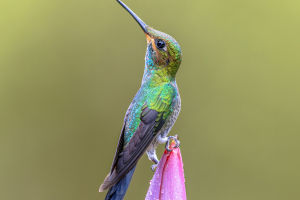When we talk about fighting climate change, we often picture solar panels, electric cars, and policy debates. But what if some of our most powerful allies aren't human at all? In recent years, scientists have uncovered something surprising: certain animals are playing a key role in stabilizing ecosystems and capturing carbon.
These aren't minor contributions—they're measurable, impactful, and in some cases, irreplaceable. From deep oceans to grassland forests, here are five species helping us in the fight against climate change—without even knowing it.
1. Sea Otters: Guardians of Underwater Forests
You've probably seen sea otters floating on their backs, cracking open shellfish. Cute, right? But their impact goes way beyond charming Instagram posts.
Sea otters are critical to the health of kelp forests and seagrass meadows—underwater habitats that absorb huge amounts of carbon dioxide.
Here's how: sea otters keep sea urchin populations in check. Without otters, urchins overgraze and destroy kelp beds. But when otters are around, kelp can thrive, capturing and storing more carbon per acre than even terrestrial forests.
One study from Alaska found that restoring sea otter populations could help coastal ecosystems absorb up to 12 times more carbon.
2. African Forest Elephants: The Accidental Foresters
They're massive, slow-moving, and surprisingly gentle—but African forest elephants are also key players in forest regeneration.
As they move through the forest, they trample small plants and spread seeds through their dung. This process clears space for larger, slow-growing trees that are far more efficient at capturing carbon.
According to research published in Nature Geoscience, these elephants could help boost the carbon storage capacity of Central African forests by more than 7%. That's the equivalent of millions of tons of carbon kept out of the atmosphere.
Fewer elephants means less of this natural pruning—and weaker carbon sinks. Protecting them isn't just about biodiversity. It's climate action.
3. Whales: Oceanic Carbon Engineers
You wouldn't expect the world's largest animals to help fix the climate—but they do, in a few surprisingly elegant ways.
First, whale waste is incredibly rich in nutrients. It fertilizes surface waters, fueling the growth of phytoplankton—tiny marine plants that absorb an estimated 40% of all carbon dioxide produced globally. That's more than all the rainforests combined.
Second, when whales die, their bodies sink to the ocean floor, storing carbon for centuries in what's now known as "whale fall."
The International Monetary Fund once estimated that protecting great whales could be worth over $1 trillion in climate value over their lifetimes. That's a lot of impact for a creature most of us never see.
4. Wolves: Rebalancing Ecosystems, One Step at a Time
When wolves were reintroduced to Yellowstone National Park in the 1990s, something unexpected happened: the entire landscape changed.
Without wolves, deer and elk had overgrazed large areas, preventing forest regeneration. But with predators back in the mix, grazing patterns shifted.
Young trees began to grow again along riverbanks. Songbirds returned. Beavers came back, building dams that improved water flow and helped trap sediment—another way carbon stays locked in the ground.
This is known as a trophic cascade: one top predator reshaping the entire ecosystem. And when ecosystems heal, so does their climate function.
5. Parrotfish: Protecting Coral Reefs in Disguise
Parrotfish are colorful, noisy reef dwellers that spend their days munching on algae and dead coral.
That might not sound heroic—but in doing so, they clean coral surfaces and make space for new coral to grow. Healthy coral reefs not only support marine biodiversity, they also help buffer coastlines from erosion and store carbon in their skeletons.
Some island nations have even banned fishing parrotfish, recognizing their outsized role in reef recovery—and, by extension, climate resilience.
So, what's the takeaway here?
Protecting animals isn't just about saving cute species. It's about recognizing their place in the bigger picture—how they shape forests, oceans, and climate cycles in ways we're only beginning to understand. We don't need to invent nature-based climate solutions. We just need to stop breaking the ones that already exist.
Maybe next time we talk about carbon offsets, we should be talking about whales, otters, and elephants too. After all, they're already doing the work.


